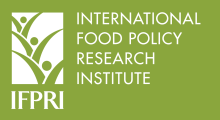Resource information
In this paper we analyze the effect on output, employment and poverty of two (2) alternative versions of further trade liberalization -- one representing free trade world wide (WTO) and the other a Western hemisphere free trade bloc (FTAA). The paper introduces international commodity price changes derived from a world model into national Computable General Equilibrium (CGE) and microsimulation models for fifteen (15) Latin American countries to estimate how FTAA and WTO would affect sectoral output, employment, wages and poverty levels at the national level for each of the countries. We found that either of these two alternatives is expansionary for both output and employment in general and for agriculture in particular in most Latin American countries. WTO particularly favors the rural sector because the elimination of producer subsidies in developed countries causes a big increase in prices of all food commodities, especially on grains, dairy products and milk. As a result we found that in general, trade liberalizationreduced skill differentials, both within the urban sector, and where we had the information, between the rural and urban unskilled. Finally, the poverty microsimulation exercise showed that the poor are helped by either WTO or FTAA. Either version reduces poverty and inequality, and the changes are especially significant under the WTO. Clearly the rural poor pay a fairly heavy price for the producer subsidies in developed countries.


